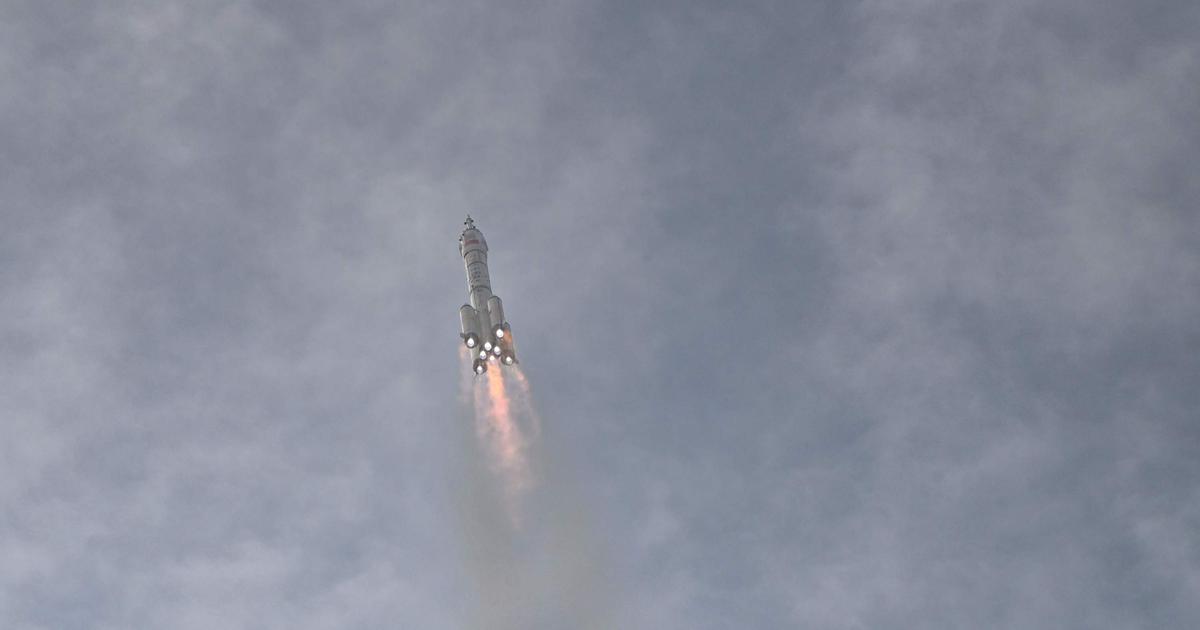China's conquest of space opens a new chapter in its history that began under Mao more than 60 years ago. On Tuesday, the Shenzhou mission launched three astronauts, including a civilian for the first time. The spacecraft docked in the afternoon with the station's central module, Tianhe, more than six hours after liftoff, state broadcaster CCTV said. The launch was a "total success" and the "astronauts are in good shape," said Zou Lipeng, director of the launch center.
Beijing is investing billions of euros to catch up and try to overtake the powers of the sector (United States, Russia, Europe) in terms of exploration, research or launch of satellites. Projects related to China's "space dream" have multiplied under President Xi Jinping, perpetuating the dreams of the founder of the People's Republic of China.
Mao's Call
In 1957, the USSR placed the first man-made craft, Sputnik, into Earth orbit. Mao Zedong appealed to his fellow Chinese: "We too will make satellites!
»Mao Tse-Tong in 1957, in China. STR
The first stage came to fruition in 1970. Beijing launches its first satellite: Dongfanghong-1 ("Red Orient-1"), named after a refrain glorifying Mao... whose melody will be broadcast in space.
The Dongfanghong-1 satellite, November 23, 1999, at the Military Museum in Beijing. STEPHEN SHAVER
First human
It was not until 2003 that the Asian giant sent the first Chinese into space, Yang Liwei. He circled the Earth fourteen times in 21 hours.
Astronaut Yang Liwei, 38, before his departure, in Jiuquan on October 15, 2003. AFP
With this flight, China becomes the third country, after the USSR and the United States, to send a human into space on its own.
See alsoSpace launchers: Rocket Lab will take over part of Virgin Orbit's assets
Test modules
China has been deliberately removed from the International Space Station (ISS), which brings together Americans, Russians, Europeans, Japanese and Canadians. Since then, she has been trying to build her own. To achieve this, it first launched a small space module, Tiangong-1 ("Heavenly Palace-1"), placed into orbit in 2011. It was used for astronaut training and medical experiments.
China's Long March 2-F rocket, which will take the Tiangong-1 space module into space, departs from the Jiuquan Satellite Launch Center, Gansu Province, September 20, 2011. STR
Tiangong-1 stopped working in 2016. This "laboratory" was considered a preliminary step in the construction of a real space station. In 2016, launch of a second space module, Tiangong-2. The astronauts make technical dockings there.
See alsoThe European space elite joins forces to put the Iris 2 constellation into orbit
Lunar rabbit
In 2013 landed on the Moon the small remote-controlled robot "Jade Rabbit", responsible in particular for taking pictures. Initially broken, it was eventually reactivated and evolved on the lunar surface for 31 months.
Image of the "Jade Rabbit" robot taken by the lander of the Chang'e-3 probe, December 15, 2013. CCTV
The Asian giant plans to send astronauts to the moon by 2030 and build a base there, which was reaffirmed this week by the China Human Spaceflight Agency.
" READ ALSO Space tourism, giant rockets, constellations ...: the rush to the stars explodes the risks
Chinese Moon and GPS
The space program had suffered a setback in the summer of 2017 with the failed launch of a Long March 5 rocket, crucial because it can propel the heavy loads necessary for certain missions. This setback led to the postponement of the Chang'e-5 mission. Finally launched in 2020, this mission brought back to Earth samples from the Moon, an unprecedented operation - all countries combined - in more than 40 years.
A Long March 3B rocket carrying the Beidou-3GEO3 satellite lifts off from Xichang Satellite Launch Center, southwest China's Sichuan Province, June 23, 2020. STR
China also struck a blow in January 2019 with a world first: the landing of a remotely operated robot ("Jade Rabbit-2") on the far side of Earth's natural satellite. The country also launched in 2020 the final satellite used to finalize its Beidou navigation system (competitor of the American GPS).
" READ ALSO Aeronautics to the challenge of attracting young people
Objective Mars
In July 2020, Chinese engineers sent the "Tianwen-1" probe to Mars, carrying a remotely operated wheeled robot, Zhurong, which had landed a few months earlier on the Martian surface.
Image from the Chinese Mars rover Zhurong showing the landing platform of the Tianwen-1 Mars probe, after the rover descended the access ramp to the surface of Mars, May 22, 2021. HANDOUT
Scientists have also mentioned the possible sending of astronauts to Mars, on a more distant horizon.
Image of Mars taken by the Tianwen spacecraft, March 3, 2021. HANDOUT
" READ ALSO Elon Musk's ship, a shockwave coming to the space launch market?
Space station
China successfully launched the last module of its Tiangong space station under construction in 2022. The base must remain in low orbit, between 400 and 450 km above the Earth, for at least ten years, with the ambition to maintain a long-term human presence in space.
A Long March-2F rocket, carrying the Shenzhou-15 spacecraft with three astronauts to the Tiangong space station, at the Jiuquan Satellite Launch Center, November 29, 2022. -
The orbiting laboratory will have astronauts on board at all times through three-person crew rotations that will conduct scientific experiments and test new technologies. The spacecraft is also equipped with state-of-the-art scientific equipment, including the "first cold atomic clock system" for space, according to the Xinhua news agency. Although China does not plan international cooperation for its station, it said it is open to foreign collaboration, without specifying the extent of it. The next mission to Tiangong, Shenzhou-17, is scheduled for October.

